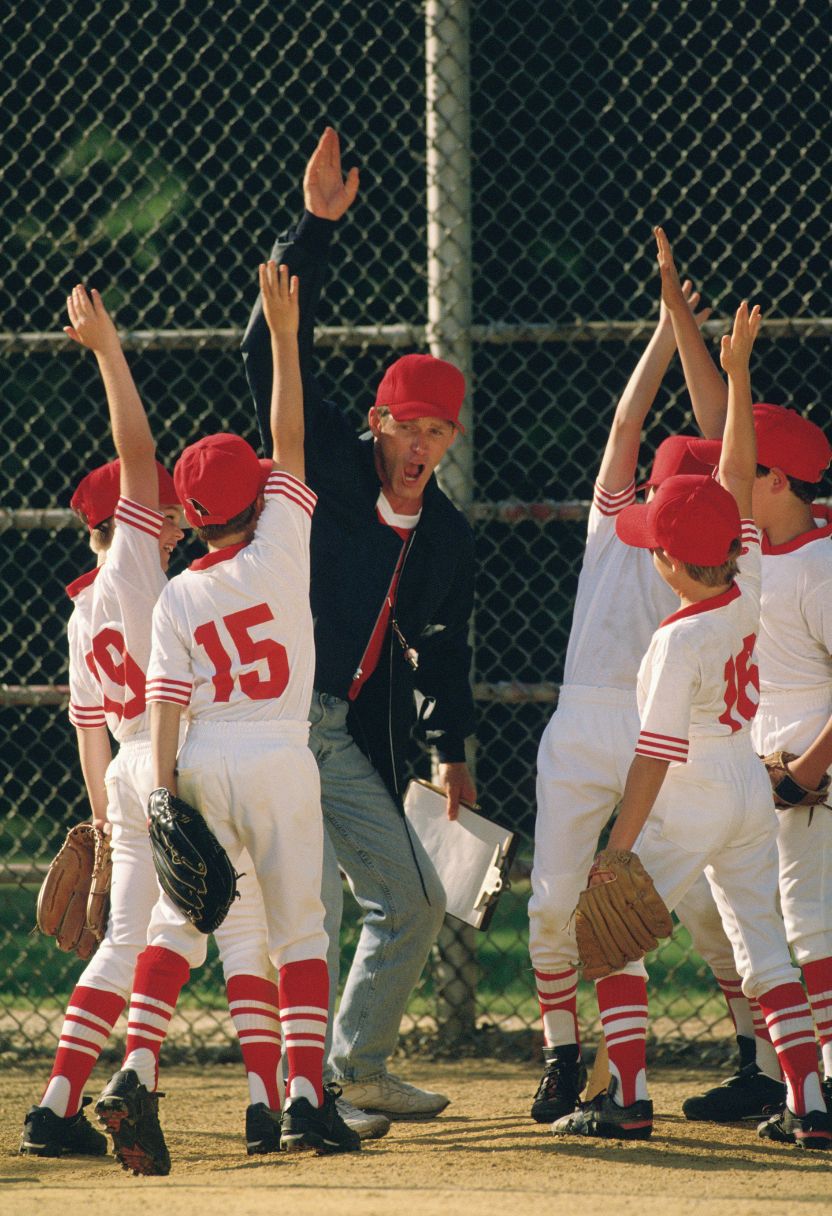

The historical development and evolution of professional leagues is a fascinating journey, one that's filled with twists, turns, and unexpected moments. It didn't happen overnight – oh no! The path to what we see today in professional sports was paved over many decades of trial and error.
In the early days, sports were mostly amateur affairs. People played for the love of the game, not for monetary gain. added details available visit it. There wasn't much organization or structure to speak of. However, as time went by, it became clear that there was potential for something more substantial. For even more relevant information visit right here. The late 19th and early 20th centuries saw the birth of some of the first professional leagues. Baseball's National League in North America started in 1876, marking a significant shift towards organized competition.
Professional leagues didn't just pop up everywhere at once; they gradually emerged across different regions and sports. Soccer clubs in Europe began to form their own leagues around this period too. For instance, England's Football League kicked off in 1888 and quickly set a precedent for others to follow.
But let's not think everything went smoothly from then on – far from it! Many early leagues faced financial troubles and organizational issues. Teams would come and go, entire leagues sometimes collapsed under their own weight or due to external pressures like wars or economic downturns.
Post-World War II era marked another pivotal chapter in the evolution of professional leagues globally. With increased prosperity came greater investment into sports infrastructure and media coverage expanded dramatically which further fueled public interest. This period saw existing leagues solidify their positions while new ones sprouted up all over the world: NBA (National Basketball Association) was formed in 1946 merging multiple smaller entities; NFL (National Football League) grew exponentially during this time too.
Oh boy did television change things! Suddenly games could be broadcasted live into living rooms across nations amplifying fan engagement tenfold! Money poured into these organizations through lucrative TV deals transforming them into powerful commercial entities almost overnight!
Of course modern-day professional leagues are highly sophisticated operations involving multi-million dollar deals sponsorships endorsements broadcasting rights you name it! They've become global phenomena attracting millions if not billions of fans worldwide generating enormous revenues year after year!
But hey let's not forget where it all started – humble beginnings with passionate individuals playing purely outta love for sport slowly giving way to structured competitions leading us here today - witnessing grand spectacles week-in-week-out filled with pulsating drama excitement unpredictability that only high-level competitive sport can deliver!
So yeah when we talk about historical development & evolution pro-leagues we're really talking bout an incredible transformation story spanning well over century shaped by myriad social economic technological factors along way shaping face modern sport forevermore!
The structure and organization of major professional leagues, like the NFL, NBA, or Premier League, is quite an intricate system. You might think it's all about players just showing up and playing games, but oh boy, there's so much more behind the scenes!
First off, let's talk about the league commissioners. They're kinda like the top bosses who oversee everything. To read more view this. They don't just sit back in their cushy offices either; they have to make sure everything runs smoothly – from scheduling games to handling disputes among teams. And trust me, there are plenty of those! The commissioner ain't a job for the faint-hearted.
Then you got the team owners. These folks are usually billionaires who've invested tons of money into their teams. They hire general managers and coaches to put together winning rosters. It's not an easy task because they have to balance budgets while trying to sign star players who can lead their team to victory.
Speaking of players, they're organized into teams that compete throughout a season which usually ends with playoffs and then a grand finale - the championship game or series. Each player has his own contract detailing salary, bonuses and other perks. These contracts can get pretty complicated 'cause agents try to squeeze every bit out for their clients while teams want value for money.
Now don't forget about the fans! Leagues wouldn't survive without them buying tickets and merchandise or watching games on TV (or streaming online these days). To keep fans engaged, leagues organize promotional events and community outreach programs which create a sense of loyalty and excitement around teams.
Of course there's also broadcasting rights – huge amounts of money exchange hands here. Major networks pay big bucks for exclusive rights to show games live because they know people will tune in religiously.
On top of all this you've got regulations set by each league's governing body – rules about fair play, trading deadlines, draft systems for new talent etcetera… It's quite a lot!
So yeah if you thought running a professional sports league was simple; think again! There's layer upon layer of organization involved making sure everything ticks along nicely... most times anyway!
Sure, here's a short essay on the topic:
---
Strategies for Incorporating Team Sports into Daily Life
Participating in team sports ain't just about having fun or working up a sweat.. There's so much more to it!

Posted by on 2024-07-08
Professional leagues, be it in football, basketball, or any other sport, really do have a massive economic impact on societies. They ain't just about the games; they're like these huge engines driving local and even national economies. First off, there's no denying that professional leagues bring in tons of revenue. Ticket sales, merchandise, broadcasting rights – it's all a big deal.
But hang on a sec. It's not just the leagues themselves raking in the dough. Think about all those small businesses around stadiums - restaurants, bars, hotels – they get a nice chunk of change too when fans flood their establishments before and after games. Not to mention all the jobs created from such events as well! Stadium staff, security personnel, even parking attendants benefit financially.
However – and here's where things get interesting – not everything is rosy. Some argue that public funding for stadiums is kind of a rip-off for taxpayers. Cities often fork out millions to build or renovate arenas hoping it'll boost local economy but sometimes it doesn't pay off as expected. Critics say that money could've been better spent elsewhere like on education or healthcare.
Moreover, let's talk about financial aspects within the leagues themselves. Player salaries can be astronomical! Sure, superstars bring in crowds and generate buzz but does paying someone hundreds of millions make sense? It's mind-boggling how much money flows through these organizations yet some players still end up broke due to poor financial management.
Oh! And don't forget about sponsorship deals either! Companies shell out big bucks to have their brand associated with successful teams or athletes thinking it'll give them more exposure and credibility among consumers.
So yeah while professional leagues do inject significant funds into economies there are definitely downsides too like questionable use of public money and outrageous player contracts which sometimes lead to financial mismanagement.
In conclusion though professional sports undeniably play an important role economically speaking we shouldn't ignore potential pitfalls involved especially when it comes down using taxpayer dollars wisely ensuring long-term benefits rather than short-lived gains driven by sporting success alone

The role of media and broadcasting in professional leagues can't be overstated. It's not just about showing games on TV, it's a whole ecosystem that influences the success and reach of these leagues. You'd think it's all straightforward, but nah, there's so much more to it.
First off, media coverage helps build the fame of athletes and teams. Without it, who would know about the incredible talents out there? Like remember when you first heard about that rookie sensation? It was probably through some broadcast or social media post. Without the media spotlighting these moments, they'd go unnoticed. Athletes wouldn't become household names – plain and simple.
Then there's the money aspect. Professional leagues ain't surviving without cash flow from broadcasting rights. These deals bring in millions or even billions! The NFL, NBA, EPL – they all rely heavily on this revenue stream to keep things running smoothly. Broadcasting contracts also translate into sponsorships and advertisements which make up a big chunk of their income too.
And let's talk about fan engagement for a sec. Media acts like a bridge between players and fans. Social media platforms allow for real-time interactions that weren't possible before. Fans now can follow their favorite players' lives beyond just game days – their workouts, their hobbies, heck even what they're eating for breakfast! This kind of connection wasn't really an option back in the day.
However, it's not like everything's perfect here either. Sometimes media can create unnecessary pressure on athletes with constant scrutiny over every single move they make both on and off-field. And don't forget how over-commercialization due to heavy broadcasting deals sometimes takes away from the essence of sportsmanship – making everything look staged rather than genuine competition.
So yeah, while media and broadcasting undoubtedly play crucial roles in professional leagues by promoting talent and generating revenue along with keeping fans engaged; they do come with their own set of challenges too! But hey that's life right? Nothing comes without its share of ups n downs!
Player contracts, salaries, and transfers in professional leagues are some of the most talked-about aspects of sports today. It's not just about what happens on the field; it's also about what happens behind the scenes that can make or break a team.
First off, player contracts ain't as simple as just signing a piece of paper. There's a whole lot more to it. These contracts cover everything from the length of time a player will be with a team to salary details, performance bonuses, and even clauses related to injuries or behavior. It's like reading a novel sometimes! Teams and players' agents negotiate these terms meticulously because everyone wants the best deal possible. And let's face it-players don't want to be stuck in long-term deals if they're not happy with their current situation.
Now, let's talk salaries. Oh boy, this is where things get really interesting-or complicated, depending on how you look at it. Professional athletes make an insane amount of money compared to us regular folks. But hey, they're providing entertainment for millions! Salaries can vary significantly within leagues themselves; superstars rake in multi-million dollar deals while rookies might earn considerably less until they prove their worth. Yet, there are salary caps in place in many leagues designed to maintain competitive balance among teams so no single team dominates purely because they have deeper pockets.
Transfers add another layer of complexity-and drama-to professional sports. When a player moves from one team to another, it's called a transfer. This could be due to various reasons: maybe they aren't getting enough playtime or perhaps another team made an offer too good to refuse! Transfers usually involve hefty fees paid by one club to another for acquiring the player's services before their contract ends.
But wait-there's more! Free agency is when players whose contracts have expired are free to sign with any team they choose without needing permission from their previous club. It's like shopping around for better job opportunities but with way more media coverage!
In conclusion, player contracts, salaries, and transfers form the backbone of professional leagues' operations off-the-field activities (and occasionally on-field politics). While fans might focus mainly on game-day excitement and cheering for their favorite teams or players-they shouldn't underestimate how much work goes into making everything tick smoothly behind closed doors.
Well-I guess that's all I've got on this topic for now! Ain't it fascinating?
When it comes to professional leagues, fan engagement is absolutely crucial. It's not just about the game itself; it's about creating a whole experience for the fans. They ain't just spectators-they're part of something bigger than themselves. You see, without fans, there wouldn't be much of a league, would there? So keeping them engaged is essential.
Marketing strategies in this context are not simple. You can't just throw out a few ads and hope for the best. Nope, it takes more than that. Teams have got to be creative, innovative even. Social media's one big tool they use nowadays-Twitter, Instagram, Facebook-you name it! And let's not forget about those viral moments; they can really capture people's attention and get them talking. However, teams don't always hit the mark; sometimes their strategies fall flat or seem too forced.
Now onto merchandise sales-oh boy! This is where things get interesting. Fans love showing off their team spirit with jerseys, hats, and other goodies. But here's the kicker: It ain't enough to just sell stuff; you gotta create a connection through these items. When a fan buys a jersey with their favorite player's number on it, they're buying into an identity-a piece of the team's legacy.
But let's not kid ourselves; there's also plenty of room for error here too. Not all merchandise flies off the shelves like hotcakes. Sometimes you'll see products that don't quite resonate with fans or are overpriced-it happens! And when it does happen, it's back to the drawing board for those marketing folks.
In conclusion (not that we're done talking), fan engagement ties right into effective marketing strategies and successful merchandise sales in professional leagues. Without engaging fans properly first and foremostly (is that even a word?), good luck selling merch or promoting your brand effectively! So yeah-it all connects in this intricate dance between teams and their ardent followers.
And hey-let's keep rooting for our favorite teams because after all-what would sports be without us fans?
Professional team sports leagues have always been a cornerstone of both entertainment and community identity. Yet, like any other industry, they face their own set of challenges and evolving trends that will shape their future. It's not all smooth sailing; in fact, it's anything but.
One major challenge is the increasing cost associated with maintaining competitive teams. Player salaries are sky-high and don't show signs of decreasing anytime soon. Teams are spending millions just to stay relevant, which isn't sustainable in the long run. Smaller-market teams struggle even more because they can't attract big-name players without breaking the bank.
Another issue is fan engagement. Sure, there are die-hard fans who'll stick around no matter what, but attracting new ones? That's a whole different ball game. Younger generations aren't as interested in traditional sports as previous ones were. With so many entertainment options available-like video games and streaming platforms-it's hard for leagues to capture their attention.
Moreover, technology's a double-edged sword for professional sports leagues. On one hand, it offers new ways to engage fans through social media and virtual reality experiences. But on the other hand, it can detract from live attendance at games. Why bother going to a stadium when you can get an immersive experience from your couch? And let's not forget about piracy; illegal streaming is cutting into profits more than ever before.
Speaking of profits, let's talk about sponsorships and broadcasting rights. They've traditionally been cash cows for these leagues but aren't immune to disruption either. Companies are becoming more selective about where they spend their marketing dollars; ethical considerations now play a bigger role too. Nobody wants their brand associated with scandals or controversies that seem all too common in today's world.
And oh boy, if we're talking controversies-there's no shortage there! From doping scandals to issues around diversity and inclusion, professional leagues have got plenty on their plate already without having to worry about what's next on the horizon.
Yet despite all these challenges-or perhaps because of them-there are interesting trends emerging that could reshape the landscape entirely.
For instance, there's growing interest in global expansion. Leagues like the NBA have made significant efforts to promote themselves internationally with great success so far! This global reach opens up new revenue streams but also brings its own set of logistical nightmares: travel schedules become grueling and balancing international audiences' needs ain't easy either.
E-sports merging with traditional sports could be another trend worth keeping an eye on; hybrid events might attract diverse audiences who wouldn't typically interact otherwise.
Lastly-and this one's crucial-the focus on mental health is finally gaining traction within professional sports circles (thank goodness!). Players are under immense pressure both physically and mentally; recognizing this is key for future success not just individually but collectively as well!
In conclusion (phew!), while professional team sports leagues face myriad challenges today-from financial constraints through technological impacts right down societal shifts-they're also teeming with opportunities ready for those brave enough seize them head-on! Here's hoping they navigate these waters wisely!
